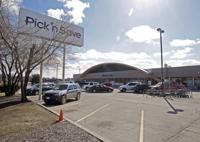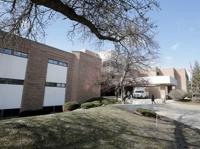Source: Dean Mosiman | Wisconsin State Journal
One of the city’s health care giants is detailing plans for a $75 million first-phase of a multi-decade redevelopment that would transform a big chunk of a triangle-shaped area bounded by Fish Hatchery Road, South Park Street and Wingra Drive on the South Side.
City officials and neighborhood residents are welcoming the investment but are concerned about a time gap between the demolition of a Pick ‘n Save grocery for the project and construction of a new grocery by a different developer on an adjacent site.
Currently, SSM Health owns a 12.9-acre parcel along Fish Hatchery Road, South Street and Midland Street that includes a three-story, 175,000-square-foot clinic, parking lots and 16 vacant homes.

SSM is acquiring a 2.3-acre site that holds the 1960s-era Pick ‘n Save at 1312 S. Park St., with the intent of demolishing the store and immediately building a $75 million, five-story, 175,000-square-foot clinic on that property. The clinic would serve the local area with departments such as pediatrics, family medicine, women’s health and internal medicine. It would also house centers for oncology and orthopedics.
When that building is completed, the existing 175,000-square-foot clinic on Fish Hatchery Road — 35,000 of which is already unoccupied — would be demolished.
“We are excited to be moving forward with the first of what we hope to be more future investment in this important location,” SSM spokeswoman Lisa Adams said.
In the future, SSM may build another roughly 60,000-square-foot building and a parking garage on the grocery site within 10 years, plans say. Beyond those phases, SSM anticipates future development on its larger campus as regional health care strategies require consolidation and growth.
“At this stage of the master planning process, it is important that we envision potential future phases, which could include more buildings and parking accommodations,” Adams said.
“Broadly, the city is very happy that SSM would continue to invest in the neighborhood,” said Matt Mikolajewski, the city’s economic development director.
Ald. Allen Arntsen, 13th District, who represents the area, said SSM’s existing clinic is becoming obsolete and is glad SSM is relocating the clinic in roughly the same place on the South Side. But Arnsten would like SSM to return the vacant homes to low-cost housing until it moves forward with long-range plans.

SSM is scheduled to make an informational presentation to the city’s Urban Design Commission on Wednesday.
Meanwhile, the city is in discussions with Welton Enterprises, which currently owns the existing Pick ‘n Save site, on plans for an $18 million grocery store, housing and parking project on an adjacent, 3.5-acre, city-owned lot at 1402 S. Park St.
Welton is proposing a 30,000-square-foot grocery store facing South Park Street with 90 parking spaces, and a separate four-story building at the rear of the lot with 52 units of mixed-income housing and 70 parking spaces, half of it underground, on the vacant lot that once held the now-demolished Truman Olson U.S. Army Reserve Center.
The city, however, has concerns about that project because the proposed grocery is only one story high, and Welton is asking for more public support for the project, called “Truman Commons,” than the city is willing to provide. The developer has been seeking between $3.1 million and $3.4 million in support, split among a discount on land costs, city Affordable Housing Fund assistance and tax incremental financing (TIF).
“We have been continuing conversations,” Mikolajewski said, adding that the city’s Truman Olson Selection Committee will consider the proposal early next month. The committee could recommend moving forward with Welton or issuing a new request for developer proposals, he said.

The timing of it all is raising concerns among some city officials and residents. Even if Welton sees the project through, the neighborhood could be without a grocery for about a year before the new store opens. If the city seeks a different developer, the wait would be even longer.
“When (the grocery) closes, there’s going to be a gap,” Arntsen said. “It’s going to be a loss to the South Side.”
Resident Lisie Kitchel, a member of the grassroots group Friends of Park Street, said neighbors generally have no problems with SSM’s development concepts but are “extremely concerned” about the loss of the grocery.
The city, Mikolajewski said, is exploring options including providing transportation to residents to other groceries or bringing mobile, limited grocery service to the neighborhood.
Kitchel said such efforts have severe practical limitations and said the neighborhood prefers that SSM hold off on demolishing the existing store until a new one is completed.

